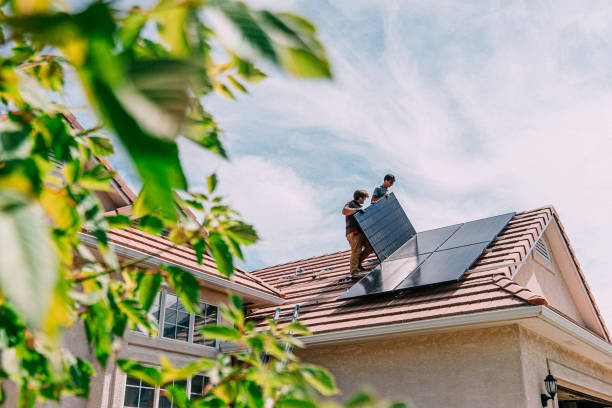Read tips for selecting outdoor lighting for your space
Selecting the right outdoor lighting transforms your property from ordinary to extraordinary while ensuring safety and functionality. Whether you're illuminating pathways, highlighting architectural features, or creating ambient spaces for entertainment, the proper lighting choices can dramatically enhance your outdoor experience. Understanding the fundamentals of outdoor lighting design helps you make informed decisions that balance aesthetics, energy efficiency, and practical needs for years to come.

Choosing outdoor lighting requires careful consideration of multiple factors that work together to create both beautiful and functional illumination. The right lighting system enhances security, extends usable outdoor hours, and showcases your property’s best features while maintaining energy efficiency and durability against weather elements.
Discover Essential Outdoor Lighting Tips
Successful outdoor lighting begins with understanding your specific needs and goals. Start by evaluating your property during different times of day to identify areas requiring illumination for safety, security, or aesthetic purposes. Consider the primary functions each lighting zone will serve, whether for navigation along walkways, accent lighting for landscaping, or ambient lighting for outdoor dining areas.
Weather resistance stands as a crucial factor when selecting outdoor fixtures. Look for lights with appropriate IP (Ingress Protection) ratings that can withstand your local climate conditions. Additionally, consider the color temperature of your lighting choices, as warmer tones typically create more inviting atmospheres while cooler temperatures provide better visibility for security purposes.
Understand Key Placement for Optimal Illumination
Strategic placement determines the effectiveness of your outdoor lighting system. Position pathway lights approximately 6-8 feet apart to ensure continuous illumination without creating harsh shadows or overly bright spots. For stairways and steps, install lights at each level change to prevent accidents and improve navigation safety.
When illuminating larger areas like patios or decks, use multiple light sources at varying heights to create layered lighting effects. Wall-mounted fixtures should be positioned at least 8 feet above ground level to minimize glare while providing adequate coverage. Consider the beam angles and light distribution patterns of different fixtures to avoid light pollution and maintain good neighbor relations.
Explore Various Lighting Design Styles
Modern outdoor lighting offers numerous design approaches to complement your property’s architectural style. Traditional lantern-style fixtures work well with classic home designs, while sleek contemporary fixtures enhance modern architectural elements. Solar-powered options provide eco-friendly solutions for areas without electrical access, though they may offer limited brightness and runtime.
Up-lighting techniques highlight trees, architectural features, and landscaping elements by directing light upward from ground level. Down-lighting creates natural-looking illumination by mounting fixtures in trees or on structures to cast light downward. Cross-lighting uses multiple light sources from different angles to eliminate shadows and provide more uniform coverage across larger areas.
Enhance Your Outdoor Comfort with Smart Choices
Smart lighting technology revolutionizes outdoor illumination by offering remote control, scheduling capabilities, and energy monitoring features. Programmable timers and motion sensors provide convenience while reducing energy consumption and extending fixture lifespan. Dimming capabilities allow you to adjust lighting intensity based on specific activities or desired ambiance.
Consider fixtures with interchangeable components that allow for easy maintenance and upgrades. Quality outdoor lighting systems should include surge protection and proper grounding to prevent electrical issues during storms. Wireless connectivity enables integration with home automation systems for comprehensive outdoor space management.
Create Inviting Spaces with Effective Lighting Solutions
Layered lighting approaches combine different types of fixtures to create versatile outdoor environments. Ambient lighting provides general illumination for overall visibility, while task lighting focuses on specific activities like cooking or reading. Accent lighting highlights decorative elements and creates visual interest through strategic placement and beam control.
| Lighting Type | Average Cost Range | Key Features | Best Applications |
|---|---|---|---|
| Solar Path Lights | $15-$50 per fixture | No wiring required, eco-friendly | Walkways, garden borders |
| Hardwired Spotlights | $75-$200 per fixture | Consistent brightness, adjustable | Tree uplighting, architectural features |
| Smart Outdoor Fixtures | $100-$300 per fixture | Remote control, scheduling, dimming | Patios, entertainment areas |
| Security Floodlights | $50-$150 per fixture | Motion sensors, wide coverage | Driveways, building perimeters |
Prices, rates, or cost estimates mentioned in this article are based on the latest available information but may change over time. Independent research is advised before making financial decisions.
Proper outdoor lighting installation often requires professional electrical work, especially for hardwired systems. Factor in installation costs when budgeting for your lighting project, as complex installations may require permits and certified electrician services. Regular maintenance, including bulb replacement and fixture cleaning, ensures optimal performance and extends system lifespan.
Effective outdoor lighting design balances functionality, aesthetics, and energy efficiency to create spaces that are both beautiful and practical. By carefully considering placement, fixture types, and control options, you can develop a lighting system that enhances your property’s value while providing years of reliable service. Remember to plan for future expansion and maintenance needs when making initial lighting decisions to ensure long-term satisfaction with your outdoor illumination investment.


